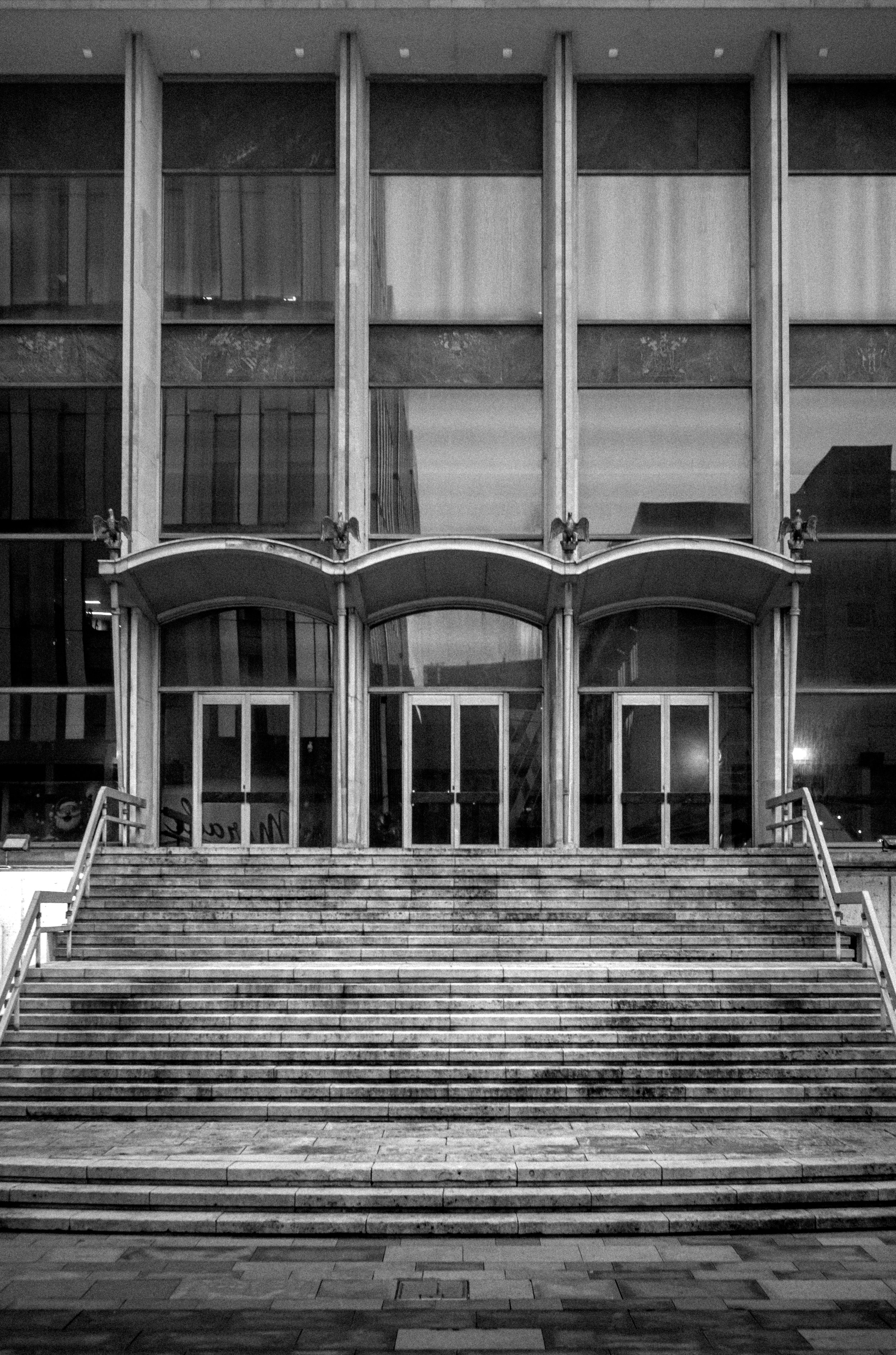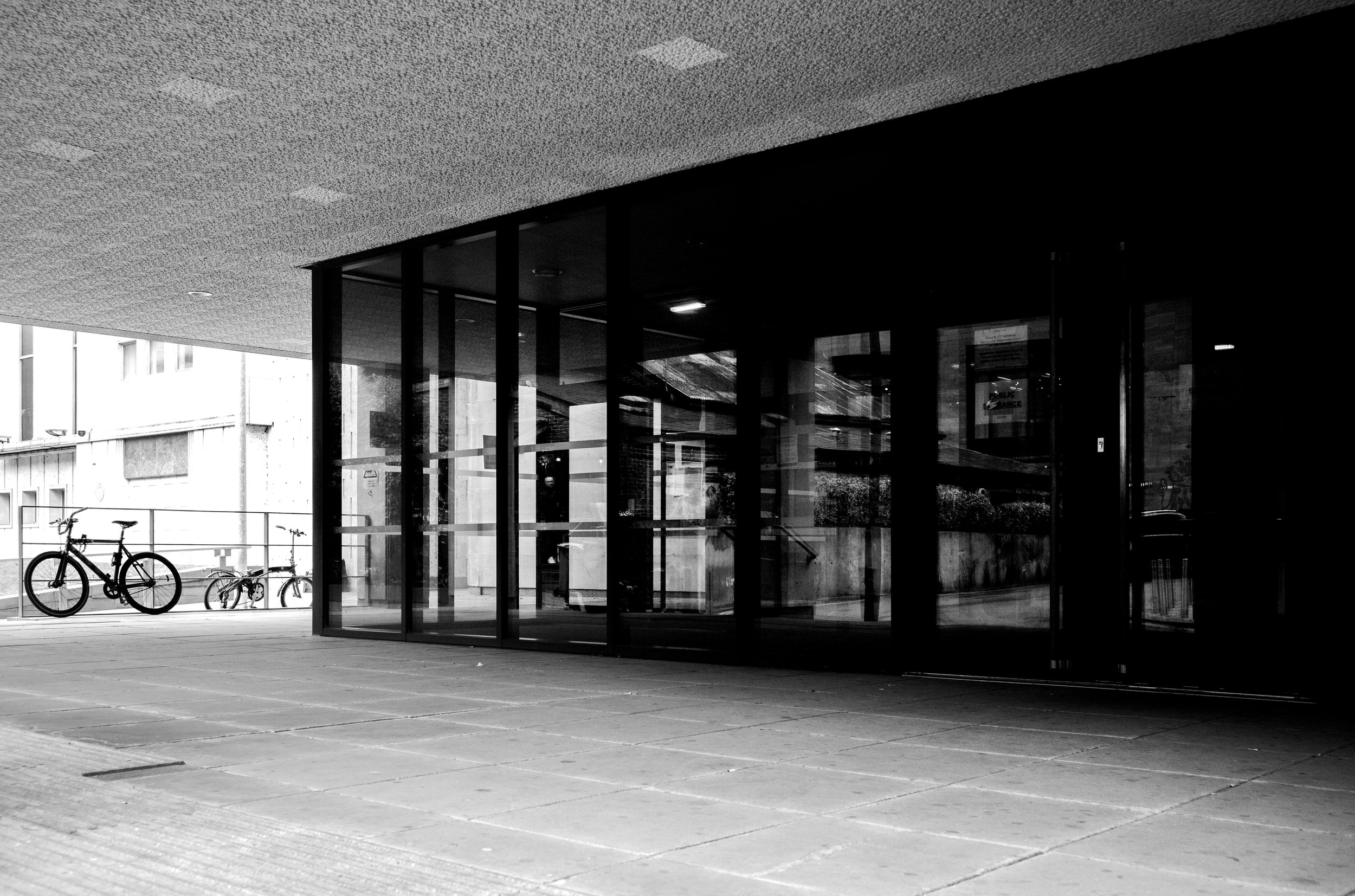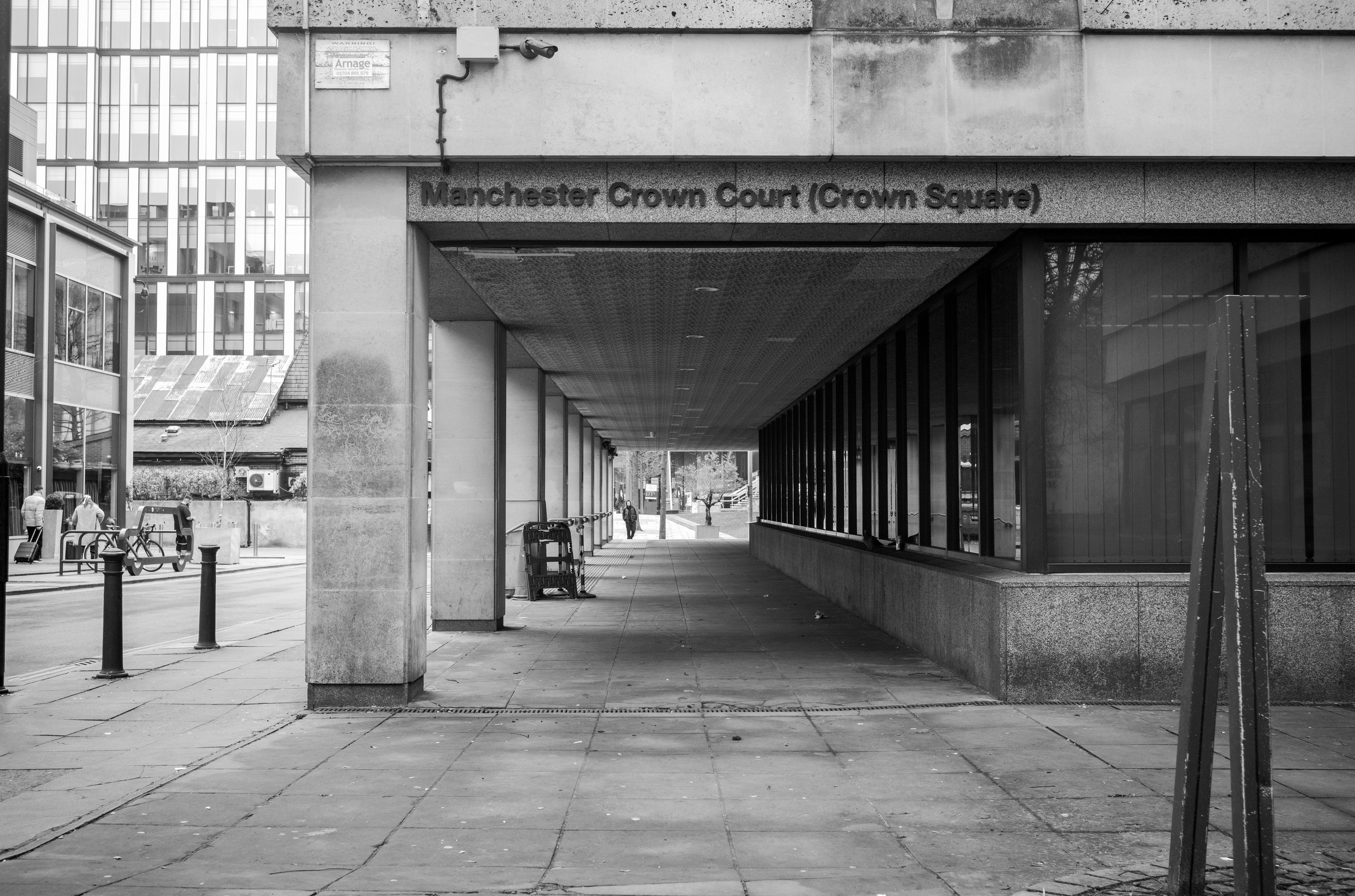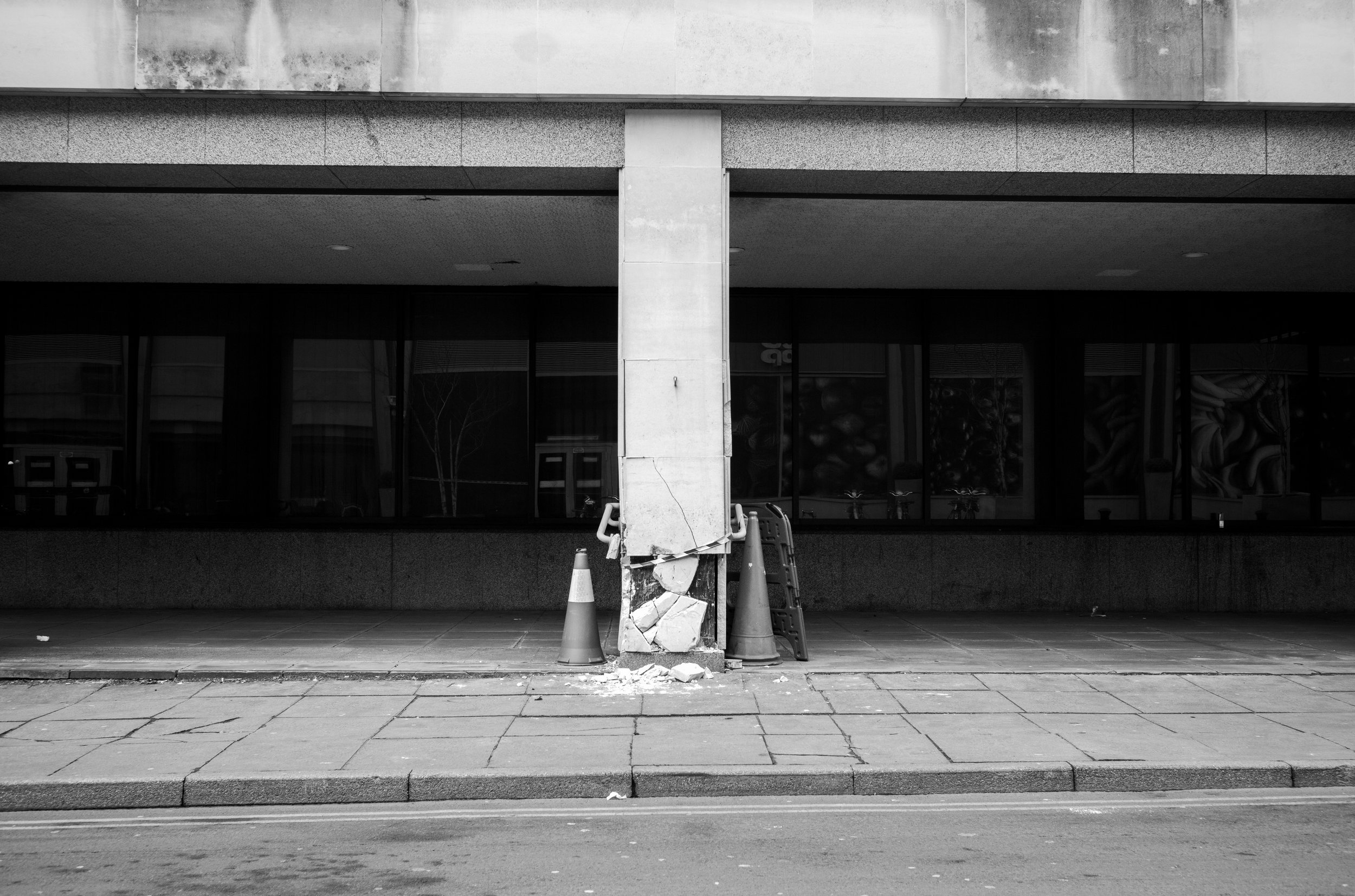
Geometry of Justice: Concrete Truths
(2025)
The Crown Court in Manchester, located in Crown Square within the Spinningfields area, reflects the city’s post-war architectural evolution. Designed in the 1960s by architect Leonard Cecil Howitt, it embodies the Brutalist style, prioritising functionality and durability. The structure features stark concrete forms, a hallmark of the era, with minimal decorative elements, focusing instead on practicality and gravitas suited to judicial purposes. This design mirrors the modernist trends of mid-20th-century Britain, aligning with Manchester’s broader urban redevelopment initiatives at the time.
It was extended to the north to a design by the Property Services Agency in the brutalist style in 1986.


This is a beautiful concrete beast. Look at those angles - raw angles, not the rounded corners of compromise. Each one cuts into Manchester space and sky like it's settling an argument. The building doesn't ask permission to exist; it just does, with all the subtlety of a judge's gavel.
Stand here long enough and you'll see how the rain maps time across its surface. Dark stains track down the concrete like tear lines, marking decades of Manchester weather against Brutalist certainty. That's what they never tell you about concrete - it's alive, always changing, always recording.
Those geometries though - that's where an obsession can really start. The way each form stacks against the next, no decoration, no apology. Pure architectural syntax. But look closer: see how the later additions cling to it like architectural footnotes, each one diluting the original argument. The building equivalent of someone talking over you.


The main entrance reads like a full stop carved in space. Built when justice wanted you to feel its weight before you even got inside. Now the surfaces are weathering, softening, like old laws getting worn down by new realities.
Three days in the civil court here for my employer in the '90s taught me how a building can hold you like a sentence structure. This place doesn't really care about your half-baked story - it's got its own grammar of guilt and innocence, all written in right angles and sharp shadows.
This is Brutalism doing what it does best: telling it straight, no fancy words needed. Even now, half-ruined by time and add-ons, it's still more honest than most buildings manage on their best days.

Stand at the right angle and you'll see it - how the whole mass of it sits in space like a truth that can't be argued with. The kind of building that makes you stop, that demands you look again, that holds you in place until you understand what it's trying to tell you. Something about permanence, about certainty, about a time when we built our convictions in concrete and let them weather in plain sight.

